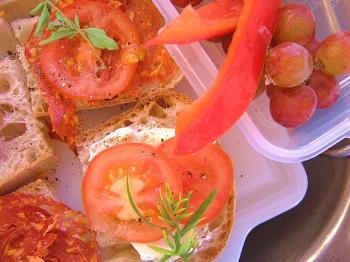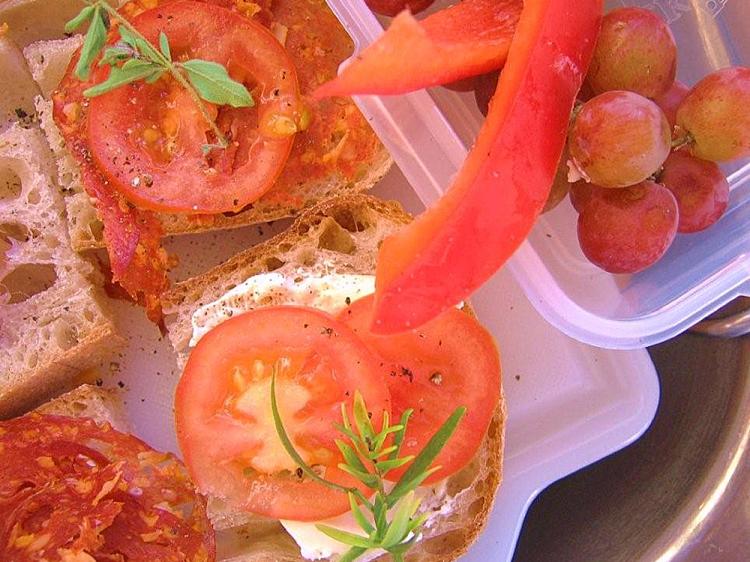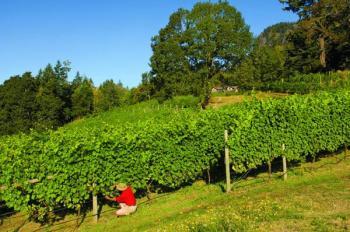Concerns about plastics have prompted a new generation of lunchboxes that are free of heavy metals and phthalates. But what we should put into those lunchboxes remains a concern, what with tainted sliced meat recalls having made Listeriosis part of the Canadian vocabulary.
Kitting out your kiddies for a day of learning need not be painful, expensive or repetitive. Children love colour and variety. Simply including imported New Zealand gala apple slices is not really enough.
Manufacturers have responded to the public demand to reduce sugar content and be trans-fat free. Words like “whole” and “natural” are big and bold on packaging, and with so many alternatives there is no need to turn to frozen pizza.
For a truly healthy option try Anderssen’s Life Flax Rolls as a quick solution. They deliver taste and have no artificial components, no preservatives, and no refined sugars—zero cane sugar, sucrose, dextrose, or high fructose corn syrup.
Kindergarten-aged children can help assemble ingredients and learn at the same time by counting and distributing zucchini fingers or grapes and saying the colours of all the fruits. Helping to make a quiche or mix a spinach spread can be family fun. Listen to what your children have to say about the day’s selection of food.
Involve voluntarily—or schedule—older children to do one day’s feature creation. Some statistics report that 40 per cent of school lunches are tossed out. That’s unlikely to happen if children have ownership and have put some work into it.
Try not to leave everything until 7 am Monday morning. Instead shift lunch preparation to the night before. Harvest some lean meat from that dinner chicken for tomorrow’s sandwiches. And yes, go ahead and bake some buns. For variety visit your local bakery or deli and purchase a dark rye loaf and some zippy pickles. Celery sticks and egg salad sandwiches could be viewed as retro, just remember to pack some refrigeration.
Involve your little ones in meeting the people who grow their food. Give the teens in your family a cloth bag and twenty dollars and send them foraging the stalls of your local weekend market. Let them be adventurous in their choosing.
Fall is a time of bounty. Chilliwack corn and just-picked tomatoes can’t be beat. Seasonal choice is now at its highest and young people can feel good about reducing their carbon footprint. Hardcore locavores are adamant that nutrition is highest when produce hasn’t traveled for days cross-country, and scientific results bear this out.
Take your children to the farmers’ market and visit with growers like Salt Spring Island’s Harry Burton. Crisp, fresh, and local, his 20 varieties will have you rethinking the spectrum of available tree fruit.
“Go ahead, taste a sample from the side table,” Burton says. His golden, plump plums drip with captured sunshine.
As for drinks, schools have actively discouraged parents from packing carbonated and “sports” drinks in their kids’ lunchboxes and have removed options of limited nutritional value from school vending machines, including many soft drinks.
SUN-RYPE products offer 100 per cent fruit juices, and many major grocery chains now have drinks that were once only available in health food stores.
Sammy Green and Elizabeth Smith’s The Healthy School Lunchbox was written for the British marketplace some years ago, but there are many other books out there to guide you. Blogs, articles and newsletters abound with useful ideas.
Habits established in the formative years affect growth and long-term health. The Vancouver Island Health Authority reminds parents to be “a positive role model for healthy eating.” In their publication Healthy Snacks for Children, VIHA promotes nut butters on crackers, trail mix, yoghurt and fruit smoothies to name just a few.
According to ActNowBC.ca, “only 20 to 25 per cent of children eat the recommended daily minimum of five servings of fruits and vegetables.” Their BC School Fruit and Vegetable Nutritional Program will reach every classroom with sustainable, locally grown (as available) produce.
If the kids want some sweet treats in their lunchbox, don’t feel compelled to buy junky bars or prepared rice squares. Puddings, loaves, and muffins can be whipped up in minutes and many items can be prepared well in advance and frozen until needed.
Sinclair Philip of Vancouver Island’s world famous Sooke Harbour House suggests we take a more European approach and focus more on “flavour and enjoyment.”
We are what we eat. What will you pack for your Jack and Jill tomorrow?
Hugh Kruzel is an educator, a food and wine expert, and photojournalist living in Victoria, B.C.





